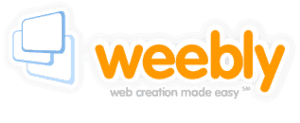 When you’re ready to step up your blogging game, get our free suite of tools. Our share buttons, social analytics and related content tool will turn your website into a destination where visitors comment, read and stay. Get Shareaholic.
When you’re ready to step up your blogging game, get our free suite of tools. Our share buttons, social analytics and related content tool will turn your website into a destination where visitors comment, read and stay. Get Shareaholic.

Photo Credit: opensourceway via Compfight cc
When I first started blogging, I was pretty clueless–I didn’t even choose my own platform.
Knowing that I was becoming interested in social media and blogging, my boyfriend created a Blogger blog for me for Valentine’s Day. It was a great option for me. Blogger was a super easy-to-use platform and to be honest, I had no idea that other options existed.
As I started to better understand the other available choices, I hopped around from platform to platform—Tumblr, WordPress.com and finally self-hosted WordPress.org.
And what did I end up with? Four or five stagnant blogs on different platforms that I rarely updated and the most confusing Google search imaginable. No one could find my real blog because there were so many other blogs cluttering my search results.
Picking the right platform for your content is essential to you establishing yourself as a blogger. While it’s fine to make a transfer one time, you shouldn’t really be jumping around from platform to platform like I did. You’ll end up having a very fragmented web presence, which will be hard to overcome with even the best SEO efforts.
Instead, learn from my mistakes. There are a ton of blogging platforms out there to choose from, but you need to find one that will work for you and the content you are creating right when you’re starting to blog.
To help set you on the right path, here’s a rundown of the pros and cons of the most popular blogging platforms:

WordPress.com
Price: Free with costs to upgrade
You’ve heard of WordPress before—it’s been around for awhile, and it continues to be one of the most popular blogging platform in the world. WordPress offers two different blogging platforms: WordPress.com and WordPress.org. The main difference between the two is that the WordPress.com sites are hosted on WordPress’ server while WordPress.org sites are hosted on an external server.
If you’re not interested in a ton of customization options, WordPress.com is the way to go. You won’t be able to add plugins, install custom themes or edit your HTML, but you will get a basic blogging platform that’s free and easy to use. If you ever want those options, it’s also very easy to switch over to WordPress.org. If you want to dive deep into the differences between the two, WP Beginner has an awesome infographic to break it down for you.
I’d suggest using this platform if you are just testing the blogging waters and aren’t ready to commit to investing time and money into a website.
Blogger
Price: Free

Even though it was my first blogging platform, I’m not a huge fan of Blogger. The site is deceiving at first. It’s easy to navigate and I love that it’s integrated with all my Google Apps, but if you want to customize your site, you have to be okay with tweaking HTML. As a beginner blogger, I was not prepared to do that (if you want to start learning HTML, we’ve got a handy guide here). Blogger does have widgets available to keep you from touching code, but it is mostly centered on adding Google products to your blog.
Ultimately, if you want a very simple set-up, Blogger could work for you. It’s easy to edit and publish posts and it has a ton of tools built it. Be warned though, as you grow your blog, other blogging platforms will have more options available to make your life easier.
Tumblr
Price: Free

Now owned by Yahoo, Tumblr is an interesting platform to consider. Like the earlier content management systems, Tumblr is really easy to get set up and start blogging. As far as specific blogging customization options, it doesn’t have much over Blogger or WordPress.com, but one of its top selling points is its culture and community.
Tumblr blogs usually contain images, gifs or videos—not necessarily long form text. The Tumblr community is also very comfortable with reposting other people’s content because of Tumblr’s “reblog” function. While other platforms do have some of those capabilities, that type of culture and community is what makes Tumblr special. If this seems like your style, definitely check it out!
Medium
Developed by Twitter co-founders Biz Stone and Evan Williams, Medium simplifies blogging by giving you a clean canvas to publish meaningful stories. With the tagline, “Everyone’s stories and ideas,” Medium aims to make it easy for anyone — with a Twitter account — to write, share and analyze their posts. A few neat features include built-in analytics (which displays view counts, “read ratios” and “recommendations”), in-line comments, and the ability to share drafts with friends.
One drawback to Medium, which I think is actually one of its biggest benefits, is its standardized template. You can’t customize your Medium column the way you can with almost all of the other platforms. But that’s the beauty of the site: its simplicity. Readers know what to expect and understand how to best consume your content.
Medium also hosts all user-generated-content on the Medium.com domain, so you aren’t able to easily develop a “following” the way you would with your own site. That being said, Medium offers plenty of opportunities for distribution via it’s Popular on Medium sections, which features the most read stories, and its weekly newsletter, handcrafted by editors who surface posts they love, which all users receive. Medium also offers “Letters,” which enables you to create a kind of mailing list for your readers, sending certain posts directly to their inboxes.
Honestly, Medium is most ideal for users who want to publish stories they’ve been dying to write but want to avoid the hassle of creating an account with any other CMSs and setting up, designing and hosting their own site.
WordPress.org

Price: Platform is free, ~$5 per month and up for hosting costs
I’m going to go ahead and admit it—I love WordPress.org. Not only do we use it here at Shareaholic, but I also use it for my personal blog. Though there is a bit of a learning curve initially, it’s one of the most flexible blogging platforms out there. If you’re dying to delve into your blog’s code, you can. If you’re not, you can use plugins and themes that make sure you hardly ever have to touch a piece of code. It’s also a well-loved platform by the developer community, which means there will always be fresh tools and themes available for you to use.
I do want to emphasize that getting started on WordPress can be a challenge, especially if you don’t have some technical knowledge already. You’ll have to worry about downloading an FTP client and grabbing a web host right off the bat (we have a guide that can help choose one). This can be intimidating for a newbie blogger. Still, if you bite the technical bullet and go with WordPress, it’s well worth the investment!
Squarespace

Price: $8-$16 per month
I’ll be honest—I’ve never hosted my blog on Squarespace. That being said, after taking it for a spin I am VERY tempted to jump ship from WordPress. (Kidding! No more switching for me.) It is a terrific option for those of us who want to customize a blog but don’t have the coding chops yet. It’s intuitive to use with built in analytics and drag and drop page templates.
This is also a great platform for those of us who eventually want to expand our blogs into a business. Whether you want to launch a simple landing page or an ecommerce website, it would be incredibly easy to do it all through Squarespace.
Though it is super easy to use, it doesn’t have all the plugin and theme support that WordPress does—you’ll have to manually insert code in your blog to get the same tools.
Typepad
Price: $9-$30 per month

If you think that WordPress.com is too simple and WordPress.org is too complex, Typepad is the perfect compromise. Like WordPress.com, Typepad blogs are all hosted on their server, but you have a lot of customization options available. It’s still fairly hard to edit their code, but it offers more extensive themes and blog plugins than WordPress.com. If you’re looking for a semi-robust platform that’s a middle step between WordPress.com and WordPress.org, Typepad might be a good option for you.
Weebly
 Price: Free to start, upgrade available (~$5 a month for additional features and $35 a year for a custom domain)
Price: Free to start, upgrade available (~$5 a month for additional features and $35 a year for a custom domain)
Weebly is a very easy-to-use tool to create websites and blogs. It’s one of the easiest in the bunch to navigate with excellent SEO capabilities wired in, but it didn’t strike me as the best blogging platform. It was much harder for me to put together a post compared to the previous options. It might be a good option if you have a main website and happen to blog as well, but if you’re a full-time blogger, it is probably overkill.
I also really liked its drag-and-drop features, but be warned that editing the HTML and CSS of your site is pretty tricky. Since it’s not particularly cheaper or better designed than any of the previous options, I’m a little lukewarm on Weebly.
Drupal
 Price: Free, then $12 – $80 per month
Price: Free, then $12 – $80 per month
Drupal is more of a content management system than a blogging platform. While you can use it to create a blog, it’s also made to create things like corporate websites, forums and ecommerce sites, so it’s not that intuitive to use as a blogger. Like with WordPress, you’ll need to get your own host to use Drupal, but the actual software is pretty difficult to navigate.
That being said, there are some tools out there like Drupal Gardens that make it much less intense to use. Drupal Gardens creates an interface that makes it easy to create and publish your content. Even with Drupal Gardens in your holster, I’d recommend using a simpler platform for your blog unless you are a technology-savvy pro blogger with solid plans to create a business.
Joomla
 Price: Free for a month, then prices go up from $20-$100 for premium plans
Price: Free for a month, then prices go up from $20-$100 for premium plans
Like Drupal, Joomla is a content management system aimed at corporate websites rather than the average blogger. When playing around with it, I thought it was a very robust platform that really helps you create any website you’d ever want. For most bloggers though, it’s probably overkill. It’s also more expensive than any of the other platforms listed here, which may be a deal breaker if you’re just starting out. If you’re looking to learn more about Joomla or Drupal, here’s a great article to read.
Ultimately, picking a blogging platform is a personal decision—what works for someone else may not work for you. If you’ve already picked your blogging platform, I’d love to hear from you in the comments. Which platform are you using? What do you love or hate about it?
p.s. be sure to get our free tools to make your new blog extra awesome.

